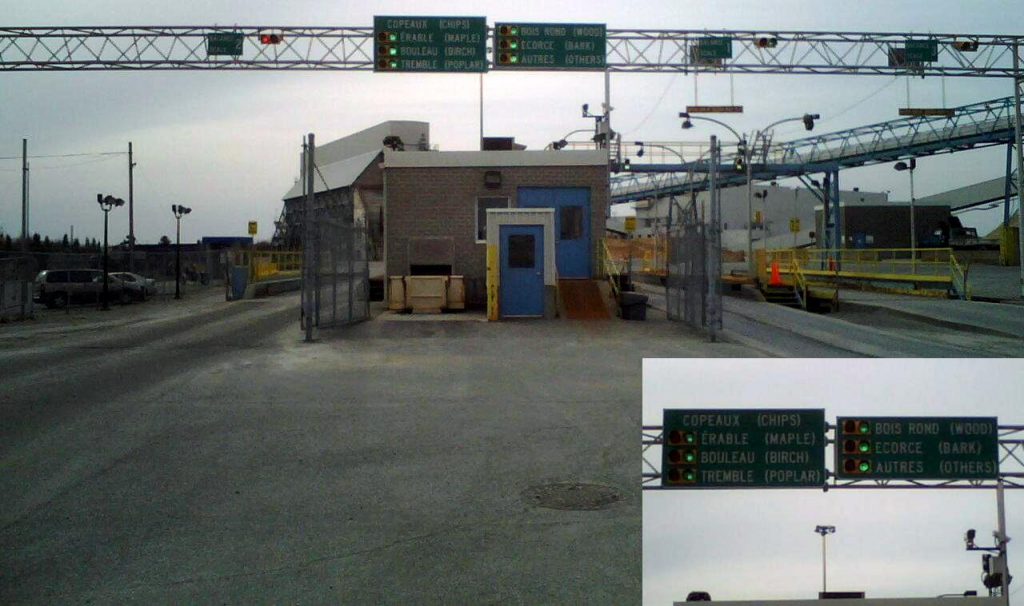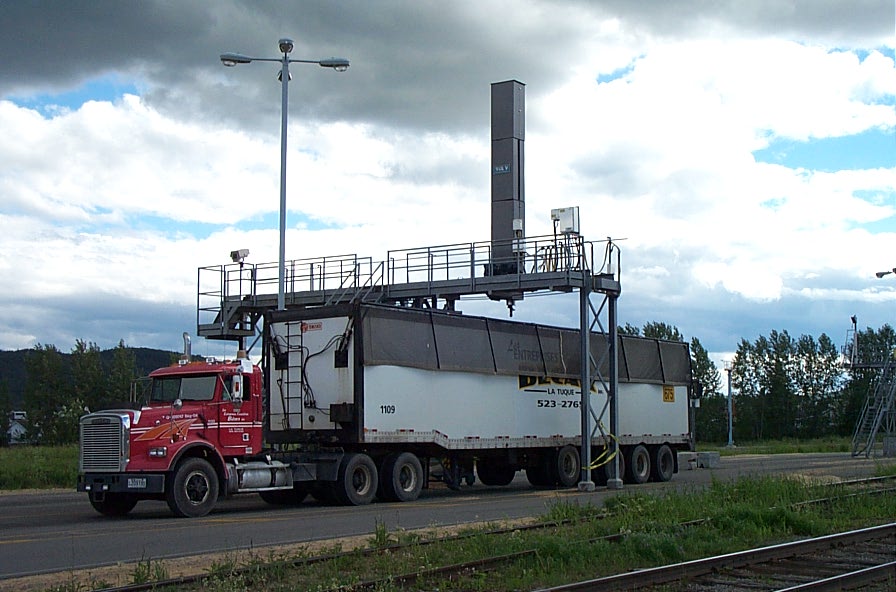The BPAL Experience
BPAL is a fully integrated system that combines advanced software and hardware designed for facilities that process pulp, paper, paper-based packaging, panel board, bioenergy, bio-fuels, and recycled materials. It is deployed as part of the Raw Material Supply Chain Infrastructure to manage bulk feedstock procurement. From the outset, BPAL’s design recognized the need for two closely connected software components to effectively deliver the required operational services at client sites.
CDC’s clients span several industrial sectors, many of which share common operational characteristics. This alignment made it possible to standardize system functionality across sectors, delivering significant benefits.
The resulting architecture includes an automation component designed to handle real-time events with minimal manual intervention, streamlining operations through extensive computerized control.
This automation component is tightly linked with an administrative component, ensuring that all automated processes directly support the business objectives of our clients. Together, these two components form the foundation of BPAL’s core functionality, which includes the following key operational features:
Automation
BPAL’s Real-Time Management and Control features provide an advanced level of automation to handle bulk procurement workflow processes. For example, all workflow processes at stations such as Access Control (Entry and Exit), Inbound and Outbound Weigh Scale Registration, Sample Collection for feedstock Quality Analysis, Unloading and Receiving, and Delivery Point Control become highly automated using BPAL. More detail of these operational features is narrated below:
Access Control

A pre-assigned barcoded Card or Release used when entering the premises permit the monitoring and tracking of subsequent events that a delivery will cycle through.
- Barcode card readers connected to BPAL and placed at locations where an action will take place make it possible to collect data on that event.
- Allows for traffic monitoring, transaction processing of events including the date and time
- All data is posted to the transaction created at Entry and stored in the BPAL database.
- Personnel wishing to view a traffic profile can request events based on a specific selection criteria.
- Online display and/or reports are generated in response to the request for information.
Yard Gate (Access Control) Hardware Interface Service
Designed to directly interface with the yard gate peripheral hardware such as gate activation relays, bar-code reader and trucker display (screen or light) to provide all the automated services for the execution of events dictated by an access control cycle. The Yard Gate Hardware Interface was developed as a Windows Service, is started when the Operating System on the BPAL Server is started and is independent of the Access Control User Interface. Reading the bar-coded card, validating the entry, activating the relay to open the gate, sending alerts to the security officer are all responsibilities of the Yard Gate Hardware Interface Service.
Delivery Point Control

Control access to specific delivery (unloading) points in the yard:
- User defined maximum number of vehicles per delivery point.
- Signal lights indicate whether system will accept another vehicle at the highlighted delivery point.
- Integrated with Registration at Weigh Scale to disallow entry of vehicles assigned to a specific delivery point when the maximum number of vehicles for that delivery point has been reached.
Staging Area (Delivery Point Control) Hardware Interface Service
Designed to directly interface with the Delivery Point peripheral hardware such as the overhead red/green light display Box to provide all the automated services for the execution of events dictated by a delivery point control cycle. The Delivery Point Control Hardware Interface was developed as a Windows Service and is started when the Operating System on the BPAL Server. Changes lights on display board for each delivery point to red or green depending on a user defined maximum number of vehicles at a specific delivery point. When a vehicle performs a Scale IN or Scale OUT, the vehicle counts at each delivery point are re-evaluated and the overhead display Box red / green lights are adjusted accordingly.
Weigh Scale & Registration

At entry/exit, for manned or unmanned operations, the Barcoded ID is used to identify information such as Vendor, Origin, Product, Contract, Vehicle, Delivery Schedule and more.
- Traffic lights ensure proper vehicle flow.
- Detection sensors are used for automatic truck scale zeroing and proper vehicle positioning.
- Easy-to-follow automated sequencing guides the entire operation from entry to exit.
- Net weight will be calculated as the absolute value.
Weigh Scale & Registration (Truck Scale) Hardware Interface Service
Designed to directly interface with the truck scale peripheral hardware such as the vehicle detectors, traffic lights, truck scale indicator, bar-code reader, RFID reader and ticket printer and to provide all the automated services for the execution of events dictated by a weighing cycle. The Truck Scale Hardware Interface was developed as a Windows Service, is started when the Operating System on the BPAL Server is started and is independent of the Truck Scale User Interface. Zeroing the truck scale upon vehicle detection, signaling the truck driver via traffic lights as to the state of the truck scale, ensuring the vehicle is properly centered on the truck scale before an official weight request can be processed are all responsibilities of the Truck Scale Hardware Interface Service.
Sample Collection

Sample collection can be performed manually or by automated sampling equipment interfaced to BPAL.
- BPAL offers a unique method to reduce the volume of sample testing and can be configured by Product or by Vendor Contract without giving advance knowledge that a specific vehicle is to be tested.
Unloading and Receiving

Bar-coded ID scanned to identify delivery and ensure the product is authorised to unload at the specific delivery point.
- BPAL interfaces with dumper PLC and issues a Go/No-Go signal to the controller preventing the unloading of a product into the wrong delivery point avoiding accidental product contamination.
Unloading & Receiving (Dumper) Hardware Interface Service
Designed to directly interface with the dumper peripheral hardware such as the dumper activation relays or PLC and bar-code reader to provide all the automated services for the execution of events dictated by a weighing cycle. The Dumper Hardware Interface was developed as a Windows Service, is started when the Operating System on the BPAL Server is started and is independent of the Dumper User Interface. Reading the bar-coded card, validating the entry, activating the relay to activate the dumper are all responsibilities of the Dumper Hardware Interface Service.
Quality Analysis

- Test parameters can be any defined contaminant. Quality Analysis protocols and limits are user defined by contract, product and individual data collection element
- Test results are saved in real-time using a direct link to the specific delivery based on unique ID.
- Menu driven testing procedures define automated steps allowing for single or composite testing of many samples.
- Testing procedures are tailored to increase productivity as computer-interfaced laboratory equipment makes manual recording a thing of the past.
Chip Lab Quality Analysis (Gradex / Rader) Hardware Interface Service
Designed to directly interface with the Chip Size Classifier PC to provide all the automated services for the execution of events dictated by a chip size classification cycle. The Chip Size Classifier Interface was developed as a Windows Service, is started when the Operating System on the BPAL Server is started and is independent of the Gradex User Interface. Receiving chip size classifier data from the BPAL classifier transfer program installed on the Gradex / Rader PC and applying the results to the appropriate delivery quality information stored in the BPAL database is the responsibility of the Chip Size Classifier Hardware Interface Service.


